Brazilian food is known for being comforting, satisfying, and very, very delicious. Before arriving in Goiânia, I did not know much about the variety of foods here or understand the distinct flavour palate that Brazilian food consists of. I was expecting the food to be very spicy, and include a lot of fresh fruits and vegetables — ignorantly, I was expecting the food to taste similar to Mexican cuisine. While I was correct about the amount of delicious fruit I have been able to eat, I have been pleasantly surprised to find that the food here in Goiânia has its own unique identity. While there are some dishes that have Mexican equivalents, each thing I have tried has been deliciously and authentically Brazilian.
One of my favourite things about the food here so far is how proud the locals are of the dishes they eat on a regular basis. Every time I have the opportunity to talk with a Brazilian individual for the first time, they almost always start our conversation with “have you tried _____ yet?” Most of the time, I actually have tried the foods they are so excitedly asking me about! Still, I am often asked about dishes I have never heard of. Naturally, I have an evergrowing list of foods I must eat before returning to Canada, and this is my preferred method of finding foods to add to it. There have been a number of surprising meals that I never would have thought to try if it wasn’t for the suggestions I received from my friends and colleagues that live in Brazil.
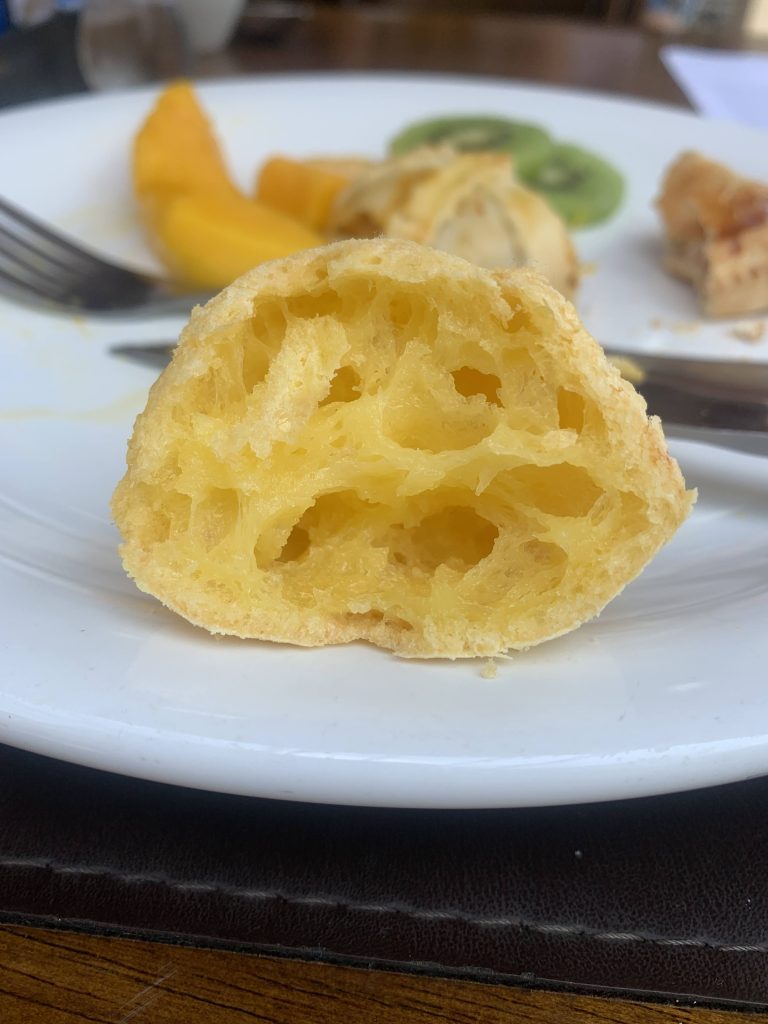
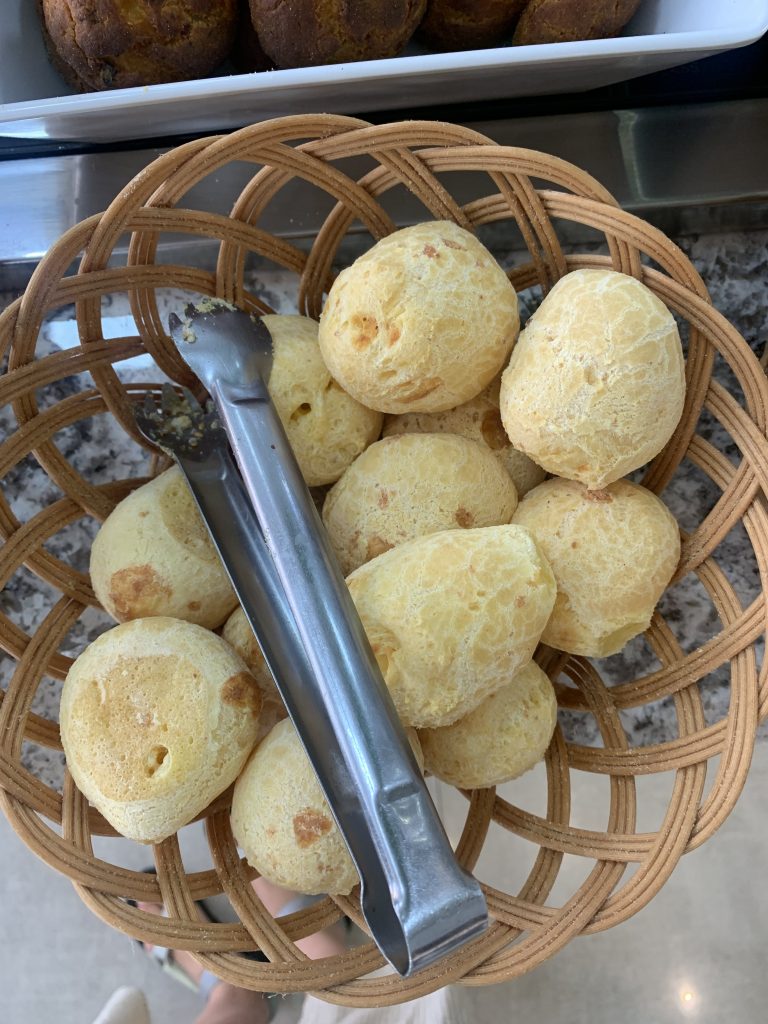
During my first week in Brazil, I think everything I ate was made up of various combinations of meat, cheese, and bread. Pão de quejio was one of the first things I ate here, and has quickly become a reliable and delicious snack that pairs well with my morning (and afternoon) coffee. It’s a texture that’s unlike anything I’ve ever tried before. Since it’s made with tapioca starch instead of flour, the bun has a bouncy, elastic consistency, and a soft cheesy flavour. Pastels and coxinha are two other salgados (savory snacks) that I have tried, and loved! They are both fried dough with meats and cheeses inside, but they taste very different from one another. Pastels are light pockets of pastry, with space for veggies to be stuffed inside. My favourite type of pastel so far has carne (beef) guariroba (bitter palm heart) and mozzarella cheese. Coxinha, on the other hand, is a heartier salgado that has a breaded dough, with a similar but more dense filling. I personally enjoy coxinha with frango (chicken) and catupiry (a soft cream cheese)
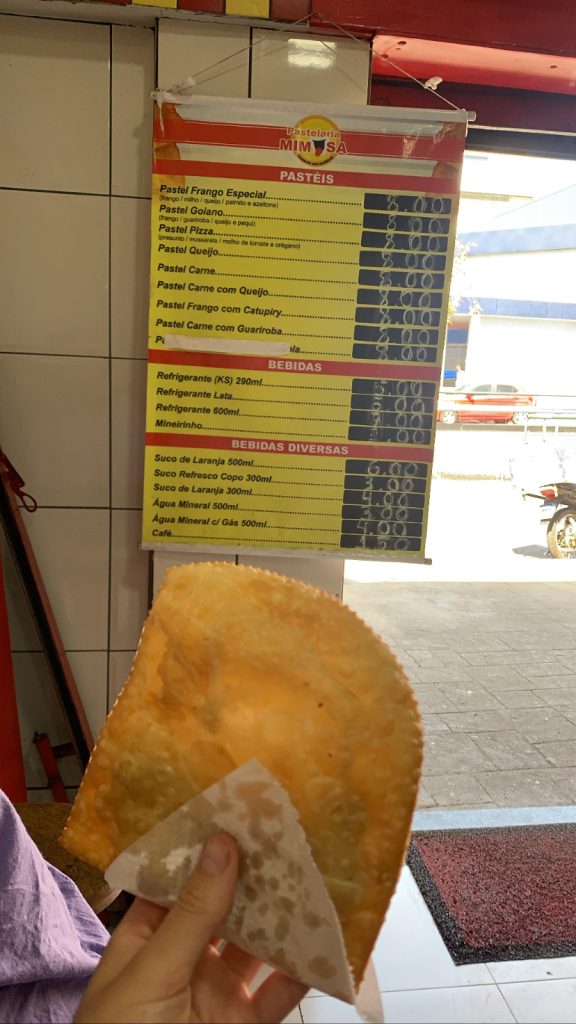
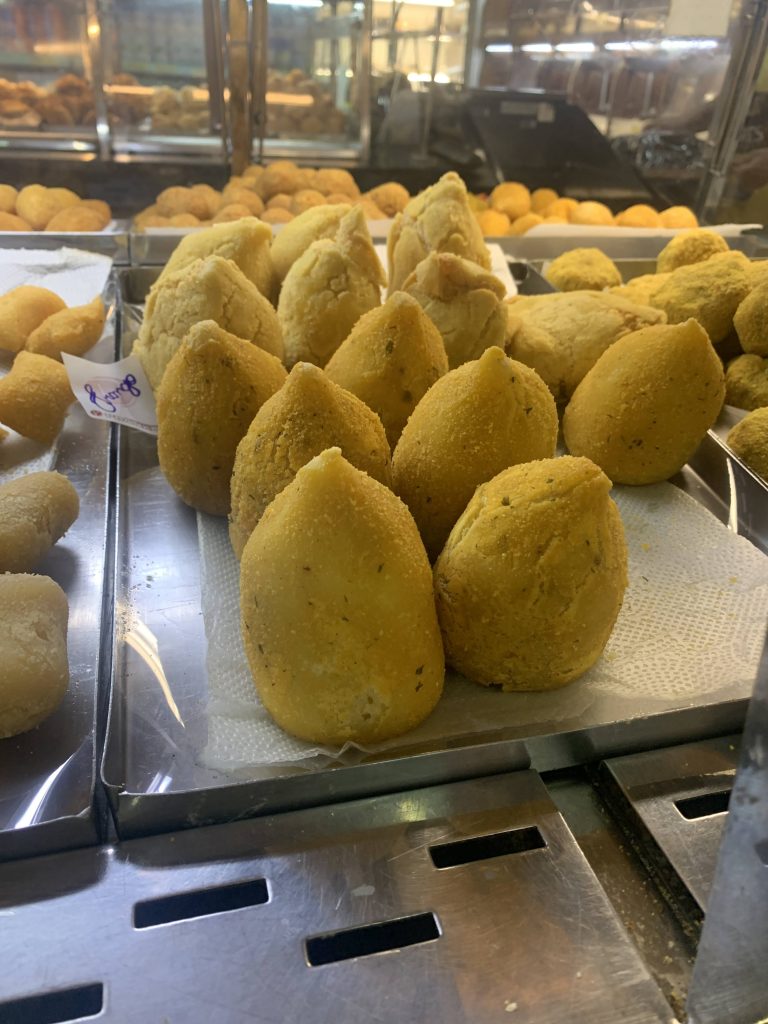
Now, this wouldn’t be a blog post about Brazilian food if I didn’t mention beans! Beans, beans, beans — every restaurant, food stand, and market has had at least one type of bean dish for me to select from. I can honestly say that before coming to Brazil, I was not the biggest fan of beans. Thankfully, I have been converted into a bean connoisseur, and am now desperately searching for recipes I can take home to recreate! Feijão Tropeiro is one of the most common bean dishes I have found in Goiânia, and is a staple dish here in the state of Goiás. The flavours in this are quite subtle and earthy, with a touch of salt. It is made with pinto beans, cassava flour, egg, and smoked pork to create a delightful combination of textures that pairs well with bolder flavours. The real star of the show, and the national dish of Brazil, is Feijoada! This is a black bean stew that is cooked for hours with different kinds of pork, beef, and sausage, and topped off with citrus, garlic, and chili! It has deep, complex flavour. After trying this, I can understand why it is world-famous and associated so heavily with Brazilian comfort food, and I can’t wait to try to recreate it at home!
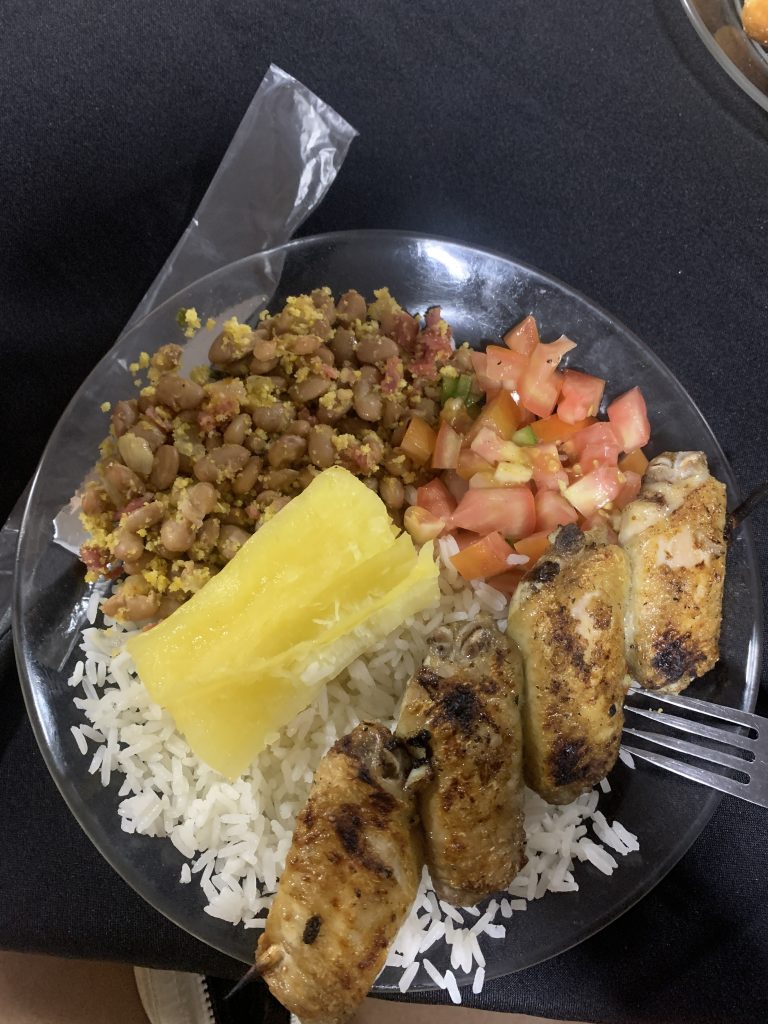
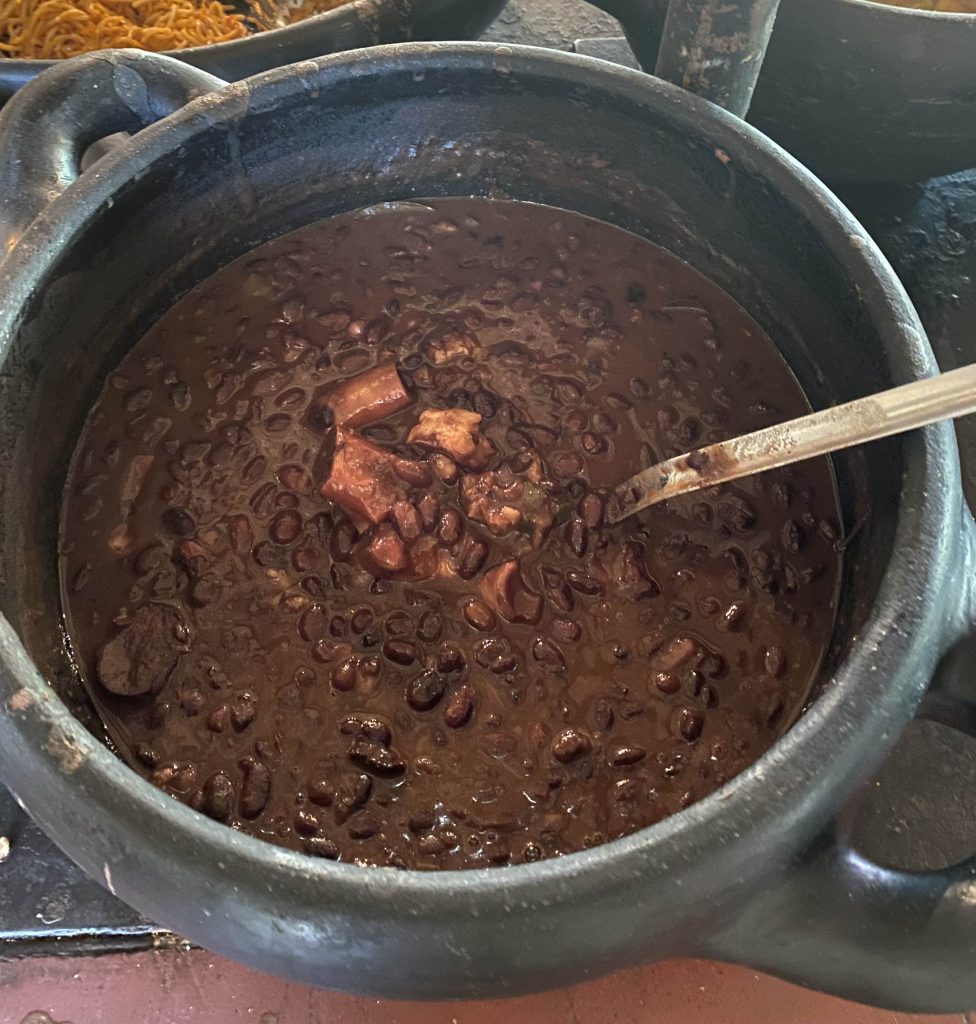
As mentioned earlier, most of the amazing food I have been able to try here in Goiânia has been due to the guidance of my amazing friends here in Brazil. Pamonha, espetos, and churrasco have very quickly become some of my favourite, and most-eaten foods during this trip.
Pamonha is very similar to Tamales found in Mexico and other parts of Latin America, but there are some key differences. While Tamales are made with dry corn flour mixed with liquid to create a dough and then steamed in dry corn husks, Pamonha is made with freshly grated corn and then boiled in fresh corn husks. They can be sweet or savory, and sometimes come stuffed with meats and cheese.
Espetos are a type of meat or cheese skewer — usually grilled right in front of you. There are lots of options to pick from, but my personal favourites are queijo coalho (grilled cheese with honey), kafta (ground meat with spices), and any type of carne. These are quick, easy meals that are usually eaten with Feijão Tropeiro, rice, tomatoes, and manioc, and are particularly popular after watching a futebol game with your friends!
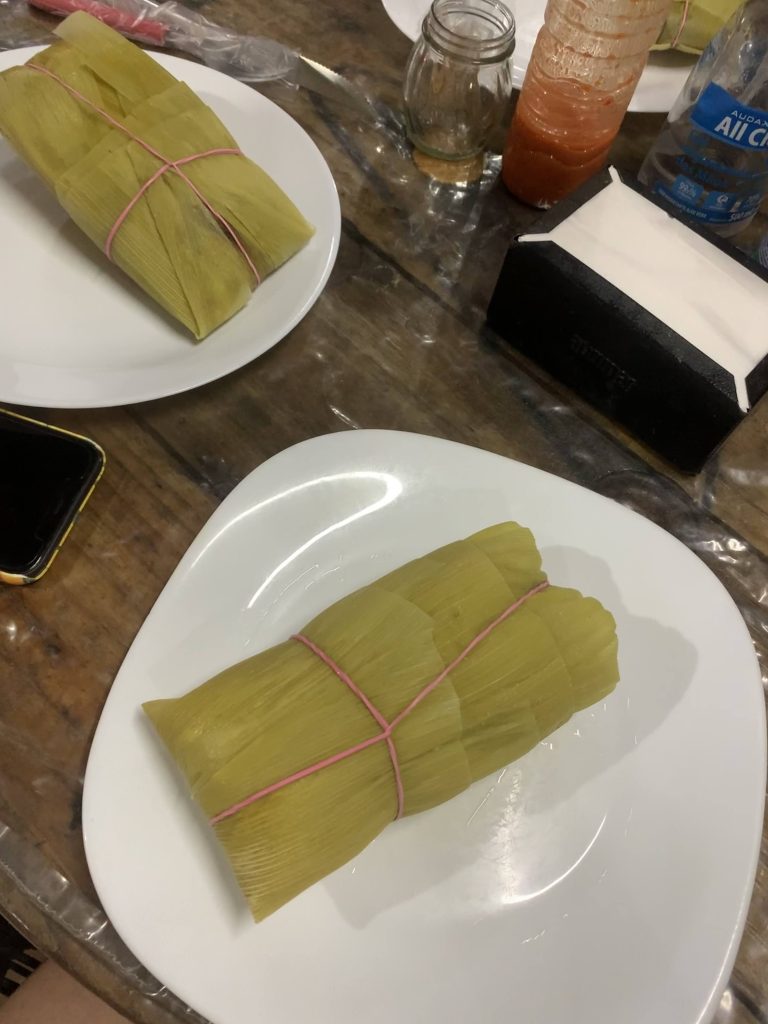
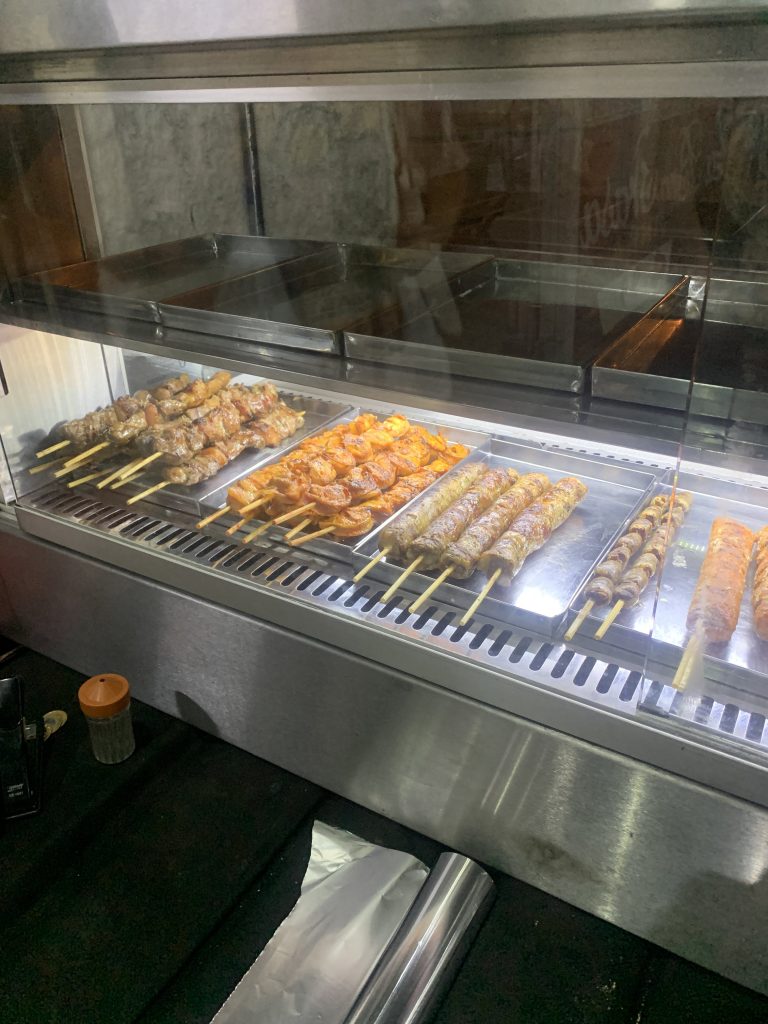
Churrasco (Brazilian BBQ) holds a special place in my heart! It is something I have actually tried back home in Calgary but does not come close to comparing to what I’ve eaten here. Not only was churrasco one of the first big meals I ate when I arrived in Brazil, but I have also been lucky enough to try the most authentic kind of churrasco: the kind a whole family cooks together for Sunday lunch, after spending the morning enjoying the sun and relaxing by the pool. Churrasco is not anything fancy, which is why it tastes so good! It’s grilled meat, with a generous amount of salt, and a drizzle of citrus juice. In the big restaurants, churrasco comes around on large skewers and you can slice off as much as you like, but it tastes even better when you can eat it fresh off the grill!
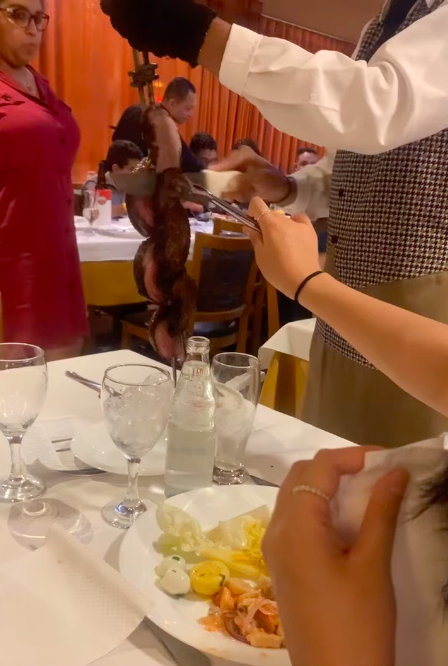
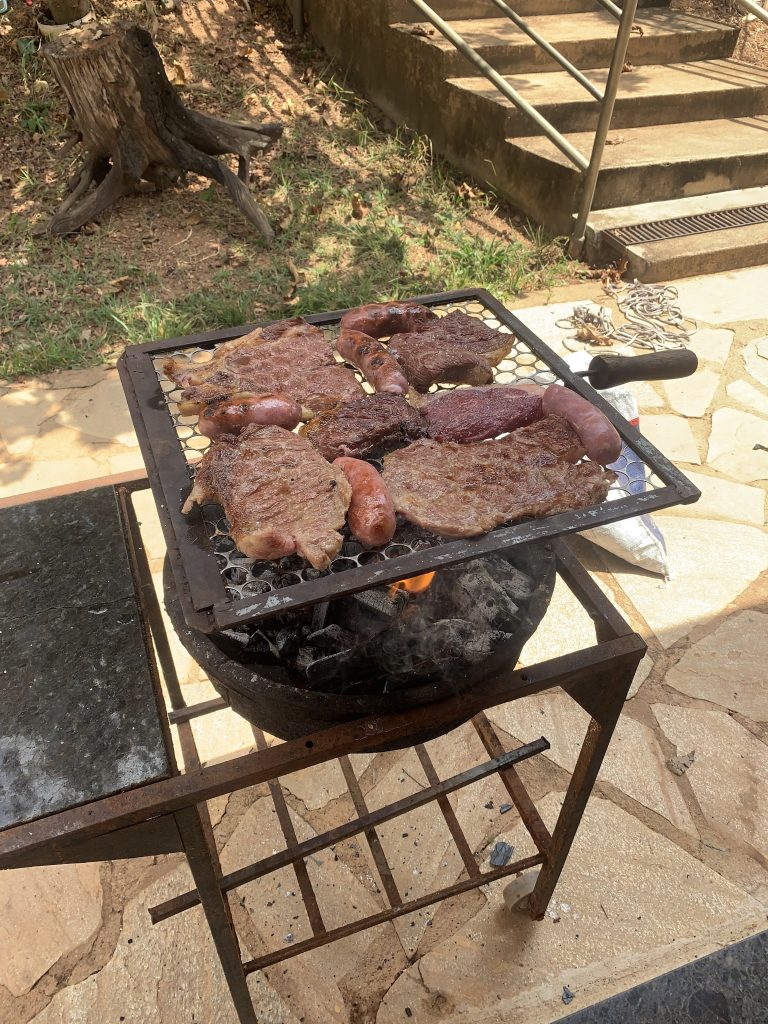
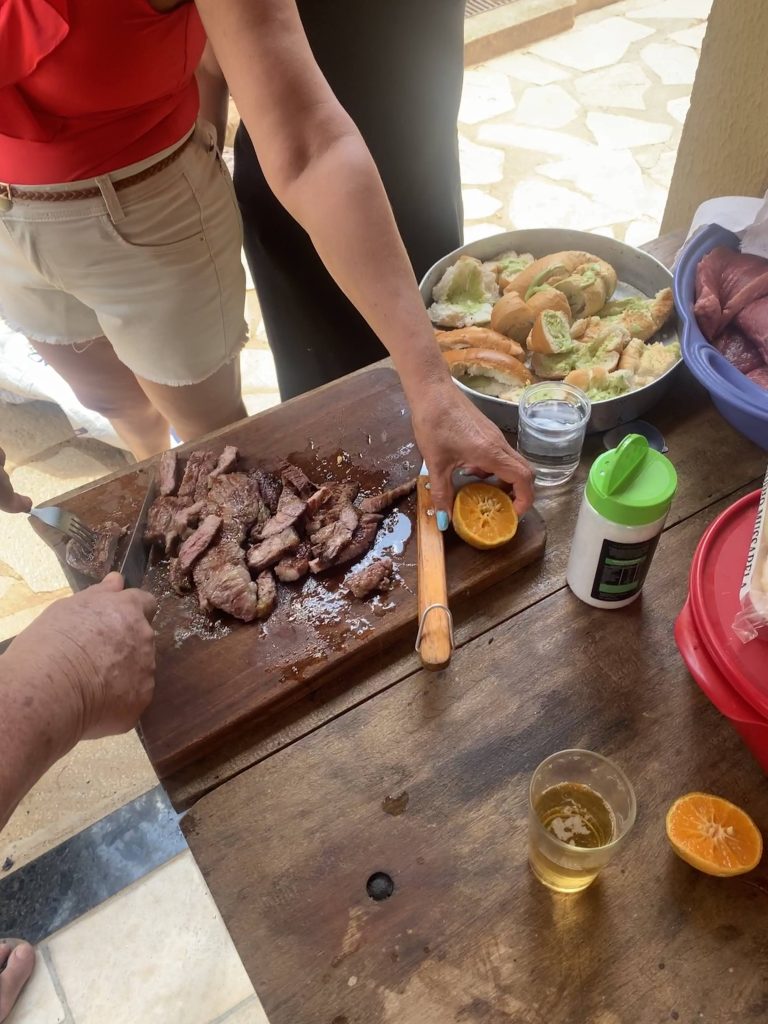
Food is at the center of so many amazing memories I have made here in Brazil! I have yet to try something I haven’t loved, which is impressive considering how many new foods I have tried. Aside from the people, the weather, and the amazing experiences I have had, I know that Brazilian food is something that I will miss dearly when I return to Calgary!